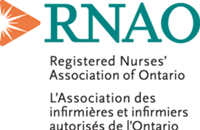RNAO says latest nursing stats reveal Ontario's RN workforce continues to decline
TORONTO, June 1, 2017 /CNW/ - A portrait of Canada's nursing landscape shows a disastrous trend continues in Ontario's health system. The province is falling further behind other Canadian jurisdictions when it comes to the number of RNs in the nursing workforce, says the Registered Nurses' Association of Ontario (RNAO).
Based on its report Regulated Nurses, 2016 released today by the Canadian Institute for Health Information (CIHI), RNAO calculates that Ontario once again had the lowest RN-to-population ratio in the country. In 2016, the province had just 703 RNs per 100,000 people, down from 711 in 2015. This is in stark contrast to the 2016 average of 839 RNs per 100,000 people in the rest of Canada – 19.5 per cent higher than in Ontario.
"We have the lowest ratio of RNs to population in the country and the situation is getting worse," says RNAO President Carol Timmings. "Our population is growing and aging, which means people who look to RNs for timely access and quality, patient-centred care may not be able to benefit from their expertise."
RNAO's examination of CIHI's data reveals a 10-year shift in nursing skill mix as a contributing factor for the drop in RNs with employers/health organizations moving away from RNs and relying more on registered practical nurses (RPN). For example, the RN share of the nursing workforce dropped from 77.7 per cent in 2007 to 70.3 per cent in 2016, while the RPN share increased from 22.3 per cent to 29.7 per cent over the same period.
RPNs must complete two years of practical nursing college education, compared to a four-year baccalaureate university degree for RNs to practice in Ontario. Timmings says the educational requirements for RNs, which have been in place since 2005, "mean that RNs have a much greater depth of education, additional skills and an expanded scope of practice that enables them to care for the sickest and most complex patients in the health system."
RNAO says the CIHI figures reinforce the need for employers and policy-makers to look at the evidence. In May, the association unveiled a comprehensive database of more than 600 research studies that demonstrates the greater effectiveness of RNs on patients, health organizations, and financial outcomes. Examples include: decreased mortality, increased quality of care, and decreased complications such as ulcers and infections. Studies also associate higher proportions of RNs with higher rates of job satisfaction and team functioning, increased organizational safety, decreased turnover, lower rates of adverse events and errors, as well as financial savings. Simply put, more RNs means safer and more cost-effective care.
Doris Grinspun, RNAO's chief executive officer, puts the blame for the drop in RNs on hospitals and the government. She says employers' fixation on the bottom line is misguided, and the government – including the Local Health Integration Networks (LHINs), Minister of Health Eric Hoskins and Premier Kathleen Wynne – are turning a blind eye to RNAO's reports and letters warning them of the consequences for patients.
"The reality is that most of the patients in hospitals today require complex care, and RNs are the ones with the expertise to deliver that kind of care. Replacing RNs with less qualified health workers will lead to poorer outcomes for patients and higher system costs. The evidence we compiled clearly shows hospitals with higher proportions of RNs will experience better health outcomes, improved patient satisfaction and lower system costs," Grinspun says. "If the government claims to put patients first and wants to improve the health of Ontarians, then it's high time they review the evidence in RNAO's database and adopt the recommendations in the association's Mind the Safety Gap report, released a year ago in response to the replacement of RNs."
RNAO is the professional association representing registered nurses, nurse practitioners, and nursing students in Ontario. Since 1925, RNAO has advocated for healthy public policy, promoted excellence in nursing practice, increased nurses' contribution to shaping the health-care system, and influenced decisions that affect nurses and the public they serve. For more information about RNAO, visit RNAO.ca or follow us on Facebook and Twitter.
SOURCE Registered Nurses' Association of Ontario

To arrange an interview with a nurse, please contact: Marion Zych, Director of Communications, Registered Nurses' Association of Ontario (RNAO), 416-408-5605 (office), 647-406-5605 (cellular), [email protected]

Share this article